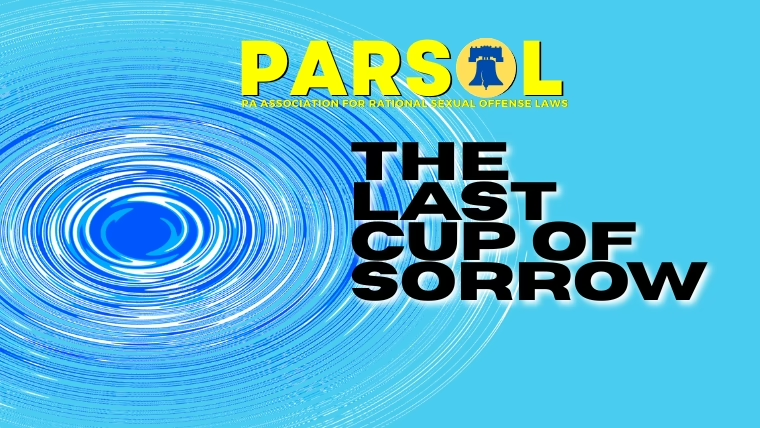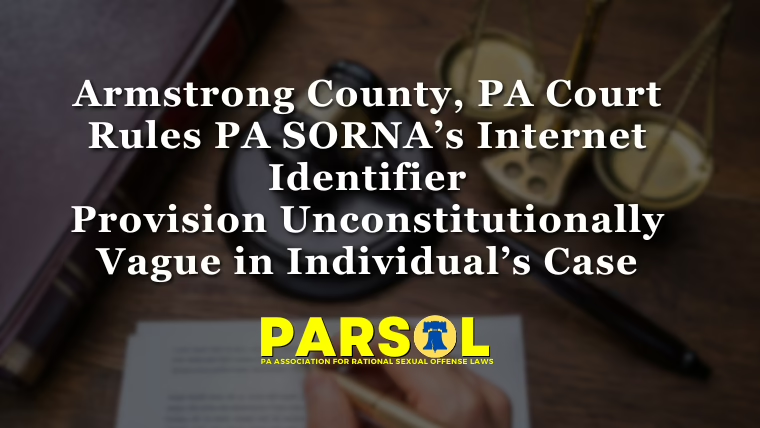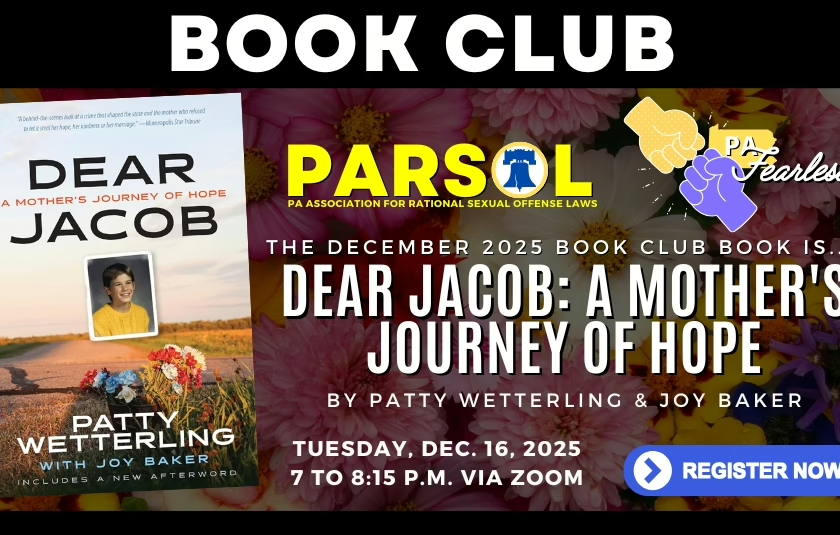A common feeling amongst formerly incarcerated persons and persons forced to register is anger: anger for the way they were treated in prison and anger over the lifelong hardships which seem to lie ahead. But anger is often just a sign of other feelings buried deeper. When someone is displaying anger, it’s useful to ask, “What are you afraid of.” When we do that, we often find the real source of our distress.
At the same time, there’s the public misbelief that victimhood is exclusive. In a criminal matter, there’s the offender and there’s the victim. Lately, the category of victims has been expanded to take in a larger circle of those impacted, but whatever shades of gray might be accepted, an offender can never be seen as a victim.
And yet, arrest, conviction, publicity, imprisonment, and post-release hardships all impact the psyche. The accepted belief is that you deserve every one of these things because you once did something that hurt someone. In the public zeal to be unforgiving, we ignore this damage even though we’re kneecapping a large part of our communities in the process.
Leaving aside the broad, sociological implications of this ignorance, my goal is to focus on you, the individual, and help you take a step towards understanding yourself. We can’t change the entrenched beliefs of our society, but we can help each person and reduce the effects.
In 1997, a band called Faith No More released a song by their own Mike Patton. Last Cup of Sorrow is a fitting theme for our journey today. Unlike the more common “motivational” talks, which blast you with a repetitive message of your ability to overcome, Last Cup of Sorrow is telling you to start by looking at your woundedness.
… This is getting old and so are you; Everything you know and never knew will run through your fingers just like sand …
Think back to the moment when your world took a nosedive. Whatever you were doing was discovered. No longer private, it was exposed to the prying eyes of those around you. You were confronted with it, embarrassed by it, threatened with it. How did you feel at that moment? What emotions raced through you? How did your body react? And then, in spite of any denial you threw out, it just wasn’t going away. This visceral, gut-wrenching response would be repeated many times in the days, weeks, months and years that followed. And it’s still just under the surface, isn’t it?
After exposure came investigation and arrest, handcuffs, being read your rights, a holding cell and the end of life as you knew it. Enjoy it while you can … If you’re reading this, you were either convicted or pled guilty to something, you were led from a courtroom and taken to jail. Again, how did you feel at that moment? You were looking for the far away dawn that was now years distant, you went through dehumanizing rituals like asking your family and friends to pay for collect calls, eating your meals with a spork within six feet of your toilet, and being strip-searched.
Release may not have meant coming home. You may face residency restrictions imposed by supervising agencies, a sort of pseudo-banishment from a community, the constant fear that the neighbors will “find out”, a trail of steadily lesser jobs as the registry led to terminations, and possibly ostracism from even your family and all the friends who faded away.
This is the woundedness. These things, maybe one or many, maybe past or present, leave wounds on your psyche. Yes, some people shrug it off and maybe see imprisonment as a rite of passage, but let that same individual get convicted of a sexual offense and you’ll see a difference. The righteousness of that wound disappears behind the wall of shame.
The series of obstacles quickly go from challenges to exhaustion. Being wounded can manifest in a variety of ways. The constant setbacks drag you down to the point of depression. Pervasive frustration leads to anger, if you aren’t already angry. And there just doesn’t seem to be a horizon.
Many formerly incarcerated persons turn to activism – a plan to somehow “get involved” and “make a difference.” The anger may now justify a sense of righteousness. But day-to-day exhaustion leaves little real energy for involvement. There aren’t many ways to get involved. Involvement is complicated, requiring skills, contacts, and support. This isn’t to say that it’s a bad idea, but that it can wind up being unfulfilling. Successes are often small and far apart and putting your name out there is risky.
And there’s that wound … It might be a sound or a smell or a dream that triggers those feelings. Or there’s a more persistent sense of isolation, loneliness, apprehension, or just surrender.
… Like a snake between two stones, it itches in your bones …
You may be required to attend a “program,” but is it really addressing your woundedness, or just reminding you of how you victimized someone else? You may have family and friends around you, but have you ever really dropped all the barriers and told anyone everything? Even if you have the ready voice, have you found that truly understanding ear? In reality, formerly incarcerated persons don’t see their wounds, let alone acknowledge them, let alone expose them to someone, because being wounded is viewed as weakness.
… Take a deep breath and swallow your sorrow tomorrow …
How far does your momentum carry you before the wound overwhelms you? Does a technical violation get you? Do you find comfort in alcohol or drugs? Do you just “chuck it” and go off the radar? I know people who have racked up two or three 4915’s … self-medicate … are sofa-surfing … because the wound is in the way of recovery.
… So, raise it up and let’s propose a toast to the thing that hurts you most. It’s your last cup of sorrow. What can you say? Finish it today …
How do you do this? First and foremost –
… it won’t begin until you make it end, until you know the how, the where and the when …
Regardless of how “successfully” you completed the SOTP and how well you did or are doing in a post-release program, you need to do the much harder work of figuring out why. This is thepart that holds people back – the eagerness to adopt one of the easy check-box reasons they told you in a program – and you know them. Because these help conceal the wound.
You actually need to do far deeper self-exploration and go through the history of your beliefs, your values, your attractions and even your fantasies. This road less traveled is very difficult, so it’s not a road you can walk alone.
… With a new face you might surprise yourself …
You need that one person to whom you can tell anything, analogous to the AA sponsor. He must not only be non-judgmental, but he must also be able to empathize with where you’ve been and how you’ve felt.
So, look around yourself. Find that person or a new face. Start talking. Let the barriers fall. Explore yourself in the company of the trusted person. Let empathy in, expose the wound, discover the understanding, and permit yourself to begin to heal. You might surprise yourself …




![stuckIn1995_rally_header - PARSOL - Pennsylvania Assoc for Rational Sex Offense Laws (PA Megan's Law Resources) PARSOL Board Chair Josiah Krammes speaks at the PA Capitol Rotunda flanked by State Reps. Emily Kinkead and Tim Briggs (28 Oct 2025) [John Dawe/PARSOL]](https://parsol.org/wp-content/uploads/2025/10/stuckIn1995_rally_header.avif)